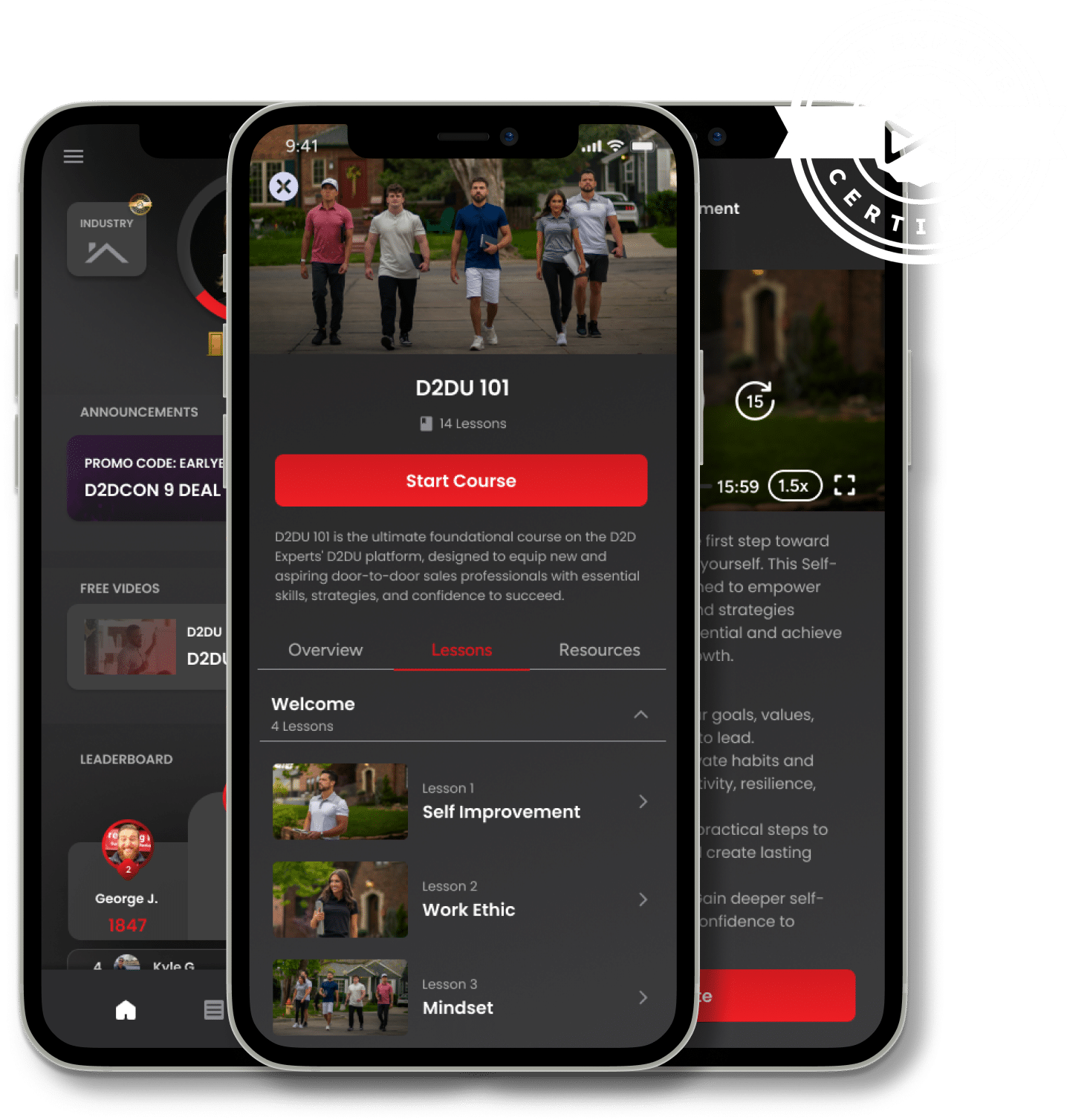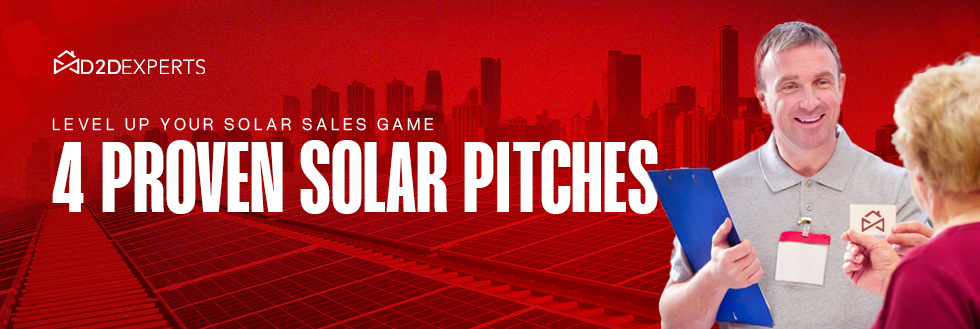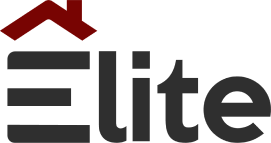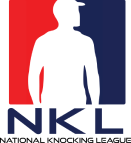Perfecting your solar sales pitch is the key to unlocking conversions, overcoming objections, and building trust with homeowners.
With over five years of solar sales experience across 13 markets, I’ve trained hundreds of reps and seen firsthand what works and doesn’t. There’s no “one-size-fits-all” pitch; it’s about adapting to your market and customer.
I’m sharing four proven door-to-door solar sales pitches that can transform your sales game and the core elements of what makes a pitch effective.
Core Elements that make the Perfect Door to Door Solar Sales Pitch
The perfect solar sales pitch is backed by precision, empathy, and a structured approach that should resonate with homeowners. Addressing pain points, offering clear solutions, and building trust can turn even the toughest conversations into successful deals.
Here’s how to do it step by step:
1. Opening Statement: Start strong by grabbing attention with a compelling value proposition.
Example: “I’m here to share how homeowners in your area are reducing their energy bills and locking in lower rates—let me show you how it works.”
2. Understanding the Problem: Acknowledge common challenges like rising energy costs or a desire for sustainability.
“I get it—electric bills can be unpredictable and frustrating, especially in the summer. That’s where solar can help.”
3. Solution Overview: Introduce solar as the ideal solution. Explain how it saves money, increases home value, and benefits the environment.
4. Benefits of Solar Energy: Highlight financial savings, tax incentives, energy independence, and reduced carbon footprints.
5. Social Proof: Share testimonials or success stories from nearby homeowners. This builds credibility and creates the “bandwagon” effect.
6. Call to Action: End with a clear next step. Encourage them to schedule a consultation or sign up for a free quote.
“It only takes 10 minutes to see if your home qualifies—let’s take a quick look now.”
Read Also “How to Sell Solar Virtually“
4 Proven Door-to-Door Solar Sales Pitches
Here are four tailored pitches designed to tackle different markets and objections, perfect for anyone improving their skills through a solar sales course or looking to refine their real-world scripts.
1. The Net Metering Pitch
This pitch works best in saturated markets where multiple solar reps have already approached homeowners. Instead of leading with “solar,” introduce net metering to spark curiosity.
How to Pitch It
“I’m here about the net metering program. They swapped out the meters a few years ago for digital ones—was yours already switched when you moved in? Net metering allows the system to track energy flow, letting you send excess power back to the grid and earn credits.”
Avoiding the word “solar” initially lets you sidestep objections like “I’m not interested in solar.” Instead, focus on the program’s benefits, then transition into how solar fits into the solution.
2. The Rent Versus Own Door to Door Solar Sales Pitch
This pitch focuses on one of the most powerful psychological motivators: ownership over renting. Many homeowners already understand the value of owning their home versus paying rent, and this concept translates perfectly into solar panel sales pitches especially when you walk them through a clear solar sales process that highlights long-term savings and ownership benefits.
How to Pitch It
“You own your home, right? Why rent your power when you could own it, too? With solar, you’re building equity and getting an ROI on the money you’re already spending on electricity. Let’s see if you qualify to own your power.”
However, taking this approach one step further can make your solar sales pitch more impactful. In a D2D Experts podcast episode, we sat down with Dev Dayalal, a top-performing solar closer and a rep who has personally sold over $10 million in solar contracts and consistently ranks among the top 1% in the industry. His numbers speak for themselves—he closes over 80% of his at-the-table deals with a realization rate far above industry averages.
His strategy? Making ownership undeniably logical and financially apparent to homeowners.
“I literally draw it out for them—side by side, apples to apples. I show them what they’re currently paying their utility company and what they’d pay if they switched to solar. And then I hand them the paper after the meeting, so they have a physical reminder of why they made this decision.“
This visual approach creates a tangible comparison, making it impossible for homeowners to ignore the long-term benefits. According to the guest, his realization rate skyrocketed once he stopped relying on digital presentations and started putting numbers in their hands. He further explains:
“Imagine if 17 years ago, when you bought this home, someone had offered you the option to rent it for $1,000 a month or own it for $1,300 a month. What would you have chosen?”
Close More Solar Deals Today
Go Beyond the Basics with Sam Taggart's Techniques

Nine times out of ten, the homeowner says they would have chosen to own it—because it builds equity, appreciation, and long-term value. At that moment, they realize they’re making the same mistake with the renters’ energy bill by not buying a home.
From there, transition smoothly:
“That’s exactly what’s happening with your power right now. You’re renting it, and the rates keep going up. But if you switch to solar, you lock in a lower rate and own your power.”
By framing the conversation this way, you let the homeowner conclude why solar is a smarter financial choice. This isn’t just a pitch—it’s a mindset shift.
3. The High Rate Plan vs. Low Rate Plan Pitch
This pitch resonates in middle-to-upper-class neighborhoods, where homeowners understand the value of equity and investment. Keep it logical and straightforward—help them see solar as an asset, not just an expense.
This approach creates curiosity by presenting solar as a solution to rising utility rates.
How to Pitch It
“We’re helping homeowners qualify for a low-rate utility plan. A lot of people have been frustrated with their electric bills climbing every summer—so we’re offering a fixed-rate alternative. Let’s see if your home qualifies.”
This pitch positions you as a problem-solver, not a salesperson. Focus on the financial pain points and offer solar as the answer to stabilizing energy costs.
4. The Solar Straight-Up Pitch
Perfect for untapped markets, this direct approach skips the frills and gets straight to the point.
“Everyone’s talking about going solar, and here’s why: it’s the future. We’re helping people transition to clean energy with no upfront costs. Let’s see if we can make it work for your home.”
This pitch works well in fresh markets where homeowners are curious about solar but haven’t been overwhelmed by other reps. Be direct, confident, and passionate about the benefits of solar.
Addressing Common Objections
1. Cost Concerns:
“I get it solar can feel like a big investment upfront. But with no-money-down options, tax incentives, and energy savings, most homeowners see a return within a few years.”
2. Upfront Investment:
Break down the payback period: “You’re already paying for electricity—solar just redirects that expense into something that saves you money long-term.”
3. Technical Challenges
Simplify the process: “Installation is quick and handled by professionals. We’ll take care of permits, inspections, and everything.”
4. Aesthetic Concerns
Reassure them: “Modern panels are sleek, efficient, and designed to blend in with your roof.”
Building Trust and Personalizing the Pitch
When it comes to solar sales, people don’t buy solar panels—they buy solutions to their problems. Customers aren’t interested in the technical specifications of a solar system; they care about how it will solve their unique challenges. Whether it’s saving money, reducing their environmental footprint, or gaining energy independence, your job is to connect solar to what matters most to them. Building trust starts with meeting the customer where they are and personalizing the pitch to their needs.
1 Tailor Your Pitch to What Matters Most
Every homeowner is different, and a one-size-fits-all sales pitch won’t cut it. To truly resonate with a potential customer, you need to understand their priorities and align your pitch accordingly. Here’s how to tailor your message:
Energy Usage Patterns
Ask about their electricity habits. Are they running their air conditioning all summer? Do they work from home and have high daytime energy usage? Use their responses to position solar as the solution to their energy challenges.
Example: “It sounds like your electricity usage spikes in the summer months. With solar, you can stabilize your bills and avoid those unexpected high charges.”
Financial Goals
Some customers are motivated by the idea of saving money. Others may see solar as an investment that adds long-term value to their property. Align your pitch to their financial mindset.
Example: “With solar, you’re not just saving on your monthly bills—you’re increasing the value of your home by up to 4%. It’s like upgrading your home and lowering your expenses simultaneously.”
Sustainability Concerns
Many homeowners seek ways to live more sustainably and reduce their carbon footprint. Appeal to their environmental values.
Example: Switching to solar is equivalent to planting 150 trees yearly or taking two cars off the road. It’s a simple way to make a big impact on the planet.”
2. Use Real Examples of Homeowners You’ve Helped
Nothing builds credibility like real-world success stories. Sharing examples of neighbors or people in the community who have benefited from solar can help customers see themselves in the solution. Social proof creates a sense of trust and belonging.
The Neighbor Effect
Mentioning other homeowners in the area creates a powerful “bandwagon” effect. People want to feel like they’re making a wise choice that others are also benefiting from.
Example: “Your neighbor, Sarah, switched to solar last month. She’s already seeing her electricity bills cut in half, and she was thrilled about how easy the process was. Would you like me to show you what that could look like for your home?”
Case Studies
If you’ve worked with a homeowner facing similar challenges, share their story. Include specifics like their energy usage, savings, and how they overcame any initial hesitations.
Example: “I recently helped a family who had the same concerns about upfront costs. With our zero-down financing plan, they were able to install solar and start saving immediately—no upfront payment required. Now they’re saving $120 a month on their electricity bill.”
Visual Proof
Showing before-and-after photos of other homes you’ve worked on can also reinforce your credibility. If possible, provide testimonials or video clips from satisfied customers.
3. Listen and Respond with Empathy
Customers trust salespeople who truly understand their concerns. After all, switching to solar can feel like a big decision. Listening to their worries and addressing them thoughtfully can make all the difference.
Common Concerns
If a homeowner expresses concerns about maintenance or aesthetics, acknowledge their feelings and provide reassurance.
Example: “I understand that you’re worried about how the panels might look on your roof. Our panels are designed to be sleek and low-profile, so they blend in beautifully with most homes. I’d be happy to show you some examples of installations we’ve done in the area.”
Building Emotional Connection
Use empathetic language to show you’re on their side.
Example: “I totally get how frustrating it is to deal with unpredictable energy bills. My goal is to help you take control of those costs and bring you peace of mind.”
4. Reinforce the Long-Term Benefits
People feel confident buying when they understand the long-term value. Highlight how solar isn’t just a purchase—it’s an investment in their future.
Financial Stability
“With solar, you’re locking in lower rates for the next 20 years. Imagine never having to worry about energy rate hikes again.”
Energy Independence
“With solar and battery storage, you’ll no longer be at the mercy of power outages or utility companies. You’ll have control over your energy, no matter what.”
Environmental Impact
“Going solar is one of the most impactful things you can do for the environment—and it’s a legacy you can leave for future generations.”
The Closing Process
When the customer is ready, don’t hesitate:
- Recognize Buying Signals: If they’re asking about ROI or timelines, it’s time to close.
- Offer Incentives: “Sign up today, and you’ll get an extra $500 rebate.”
- Address Final Concerns: Be proactive: “Do you have any other questions before we get started?”
Follow-Up Strategies
The relationship doesn’t end with the deal’s closure. Effective follow-ups ensure customer satisfaction and generate referrals:
- Post-Consultation Follow-Up: “Thanks for your time earlier—do you have any additional questions?”
- Seasonal Tips: Share advice on maximizing solar efficiency.
- Referral Requests: “If you’re happy with your system, we’d love to help your friends or neighbors, too!”
Close More Solar Deals Today
Go Beyond the Basics with Sam Taggart's Techniques

It’s all about building trust
The perfect solar sales pitch goes beyond selling panels it’s about connecting with homeowners, solving their problems, and building trust. Whether using the net metering pitch, the rent versus own approach, or going solar straight-up, the key is understanding your market and tailoring your strategy.
Solar isn’t just a job it’s an opportunity to change lives (including yours). So, take these proven pitches, refine your craft, and turn every knock into a win.
For more in-depth training, join us at D2D University, where you’ll find the tools, techniques, and insights to dominate the solar sales game.
I knocked doors since I was 11! Never bought into the whole hourly normal job, and used direct sales to be the vehicle to create MASSIVE success. I Started the Direct Sales division for Solcius as their VP building it up to have 70+ sales reps nation wide. In 2018 I left to pursue a greater mission to unify and uplevel the Door to Door industry and founded the D2D Experts.
























